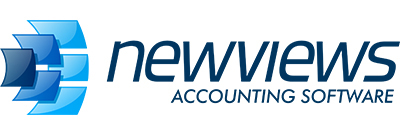-
AuthorPosts
-
March 24, 2005 at 7:11 pm #11361
Anonymous
InactiveWe plan to buy 2 licenses for NV2. We would like to be able to download NV2 and convert a backed-up set of books to it and use it for training purposes while we still have NV1 running for realtime use. Then, when we feel confident about our knowledge of NV2, we would convert our real books (which have by then, of course, would have changed from the initial conversion) Is there any problem with this plan?
March 24, 2005 at 7:55 pm #12750Anonymous
InactiveI sure hope not because I was planning the same approach.
March 26, 2005 at 4:28 pm #12753HMah
ParticipantOnce you have purchased NV2 you will be able to convert as many nv1 books as you desire, whenever you want to.
Licenses only determine how many different users can access the same set of books.
March 27, 2005 at 6:27 pm #12756Anonymous
InactiveAh – Henry, I believe that Licenses will also determine how many sets of books you can access concurrently – from the same NV2 Engine.
Post Edited (03-27-05 17:12)
April 6, 2005 at 7:05 pm #12766Anonymous
InactiveThere is no predefined limit to the number of databases that a workstation can have open simultaneously. Furthermore these databases can be any combinations of local databases opened with single user access and remote databases opened with multi-user access through a server.
April 6, 2005 at 8:35 pm #12767Anonymous
InactiveHey, I’m not always the sharpest tack in the box
So let me see if I get this right,Only a server can open remote databases?
Only a server licence can open any books in multi-user?However, the server can open any remote set of books?
Regardless of the serial number? (of course providing you have the correct user-name and password, eh?) ?Regardless of my Licence Count, even if its one !
I can open as many books as I want con-currently, remote or otherwise – from my one workstation?So from my workstation (or my server station, which one or both?) I could open all of my 20 clients books – concurrently; even with my one licence?
David
JPeters wrote:
> There is no predefined limit to the number of databases that a
> workstation can have open simultaneously. Furthermore these
> databases can be any combinations of local databases opened
> with single user access and remote databases opened with
> multi-user access through a server.Post Edited (04-06-05 16:36)
April 6, 2005 at 8:39 pm #12768Anonymous
InactiveAh – to the forum managers,
How did the message count drop from 420 to 416, and then increment?
I would like to know, which 4 messages have been removed?
Regards
DavidApril 7, 2005 at 10:51 am #12769MSchappler
ModeratorPrior announcements of NVEXPORT libraries are ready for download. Version 60, 66, 67, and 68.
Regards,
Martin
April 7, 2005 at 11:25 am #12770Anonymous
InactiveOk – Thanks
:~/
April 8, 2005 at 5:34 pm #12773Anonymous
InactiveDavid asked:
I can open as many books as I want con-currently, remote or otherwise – from my one workstation?Yes
An NV2 server is an NV2 program running on any Windows 2000/XP computer. There is nothing special about the computer used to run the server. The server can be configured to offer access to any database in its directory system. The server can offer simultaneous access to any number of databases.
An NV2 workstation is an NV2 program running on any Windows 2000/XP computer. Again, there are no special requirements for the computer used. A workstation can open and access any number of databases simultaneously. A workstation opens a local database by selecting a directory from its own directory system. A workstation opens a remote database by specifying a server and then selecting from the list of databases offered by that server. There are only two differences between opening local and remote databases:
A local database is automatically opened with single-user access and a remote database is automatically opened with multi-user access.
When opening a remote database, the server has to be identified. This is done using either an IP (Internet address such as 192.168.555.555), or a computer name, i.e. the domain name of the server computer, also sometimes referred to as a URL.
The above information is copied from our manual, “The Server”, Basic Architecture. Please read the entire section.
Post Edited (04-08-05 14:39)
-
AuthorPosts
- You must be logged in to reply to this topic.
